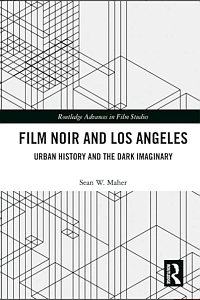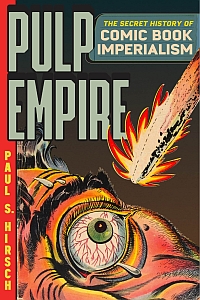While there are now fewer recent books on famous Hollywood directors – probably because criticism by now has covered almost any aspect of their work – new publications on, so far, underrated and ignored directors are being published more often. Peter A. Yacavone’s Negative, Nonsensical, and Non-Conformist is one of those books. It centers on […]
You are browsing archives for
Tag: WWII
Through a Noir Lens: Adapting Film Noir Visual Style by Sheri Chinen Biesen (2024)
Film noir productions generally are associated with dark settings, either because action takes place at night or in unlit rooms, where street light creeps through Venetian blinds and struggles all the way to hit the protagonists on the set. Originally, such an outcome on the set in part was caused by filming conditions during wartime, […]
Film Noir and Los Angeles: Urban History and the Dark Imaginary by Sean W. Maher (2022)
Movies of the film noir genre, shot in the US, usually had two favorite locations when it came to large cities and a setting that would breathe the air of crime, provide sinister plots, gunmen and desperate main characters: the pictures were either set in New York City or Los Angeles. As with Los Angeles, […]
Rural Rhythm: The Story of Old-Time Country Music in 78 Records by Tony Russell (2021)
The label “Old-Time Music” refers to American-made music, instrumental and with vocals, that was performed nationwide in public and privately from roughly the early 1800s until the early 1940s, although it became mostly a regional style in the early 20th century. Those (basically all white) musical groups usually featured string instruments such as mandolins, banjos, […]
Broadcasting Hollywood: The Struggle Over Feature Films on Early TV by Jennifer Porst (2021)
Even if the topic of Porst’s book, with regard to today’s video watching agenda that includes streaming media, Netflix, or any Internet-based platform consulted to watch movies, documentaries or series, may look a bit outdated at first sight, Broadcasting Hollywood actually is a highly interesting study, as it chronicles how we, as audiences, originally “learned” […]
Pulp Empire: The Secret History of Comic Book Imperialism by Paul S. Hirsch (2021)
Comic books as media today would not raise much attention if they featured heavy use of violence or representations of vigilantes who take the law into their own hands. On the contrary, the media now is deeply absorbed into the popular canon of the US. “The comic book, whether in the form of a collectible […]
Urban Noir: New York and Los Angeles in Shadow and Light by James J. Ward and Cynthia J. Miller (eds...
Both Los Angeles and New York City have been of particular interest to movie producers, especially to those who shot drama that was later called film noir. The authors want to dig deeper to unearth the reasons for those two locations, since the ”… inescapable question, then, is: Why this animosity toward the two cities […]
Soundies Jukebox Films and the Shift to Small-Screen Culture by Andrea J. Kelley (2018)
During the 1940s about 1,850 “Soundies” were produced in the US, destined to be played on 5,000 special standalone film machines in circulation nationwide. Those 16mm short films with a musical content were presented in coin-operated movie jukeboxes that were known as “Panorams,” which could be found in consumer places or likely in any place […]
Demographic Angst: Cultural Narratives and American Films of the 1950s by Alan Nadel (2017)
Alan Nadel, probably best known for his expert writings on the Atomic Age and American everyday life in the 1950s, has come up with another study of that period. A time when not just the permanent fears of a hot war or Soviet invasion were present, but also strange (or possibly communist) activities from your […]









